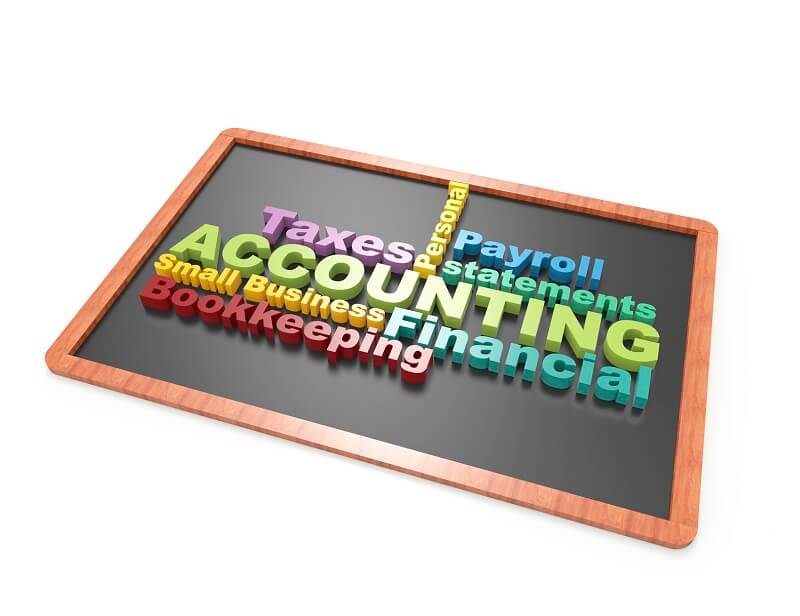 Back to the news
Back to the news
Tax Tips Traps – Summer 2017
Brian Jang ON September 14, 2017
- TAX TICKLERS
- TAX FOR PRIVATE CORPORATIONS: Major Changes Proposed
- EMPLOYEE DISCOUNTS ON MERCHANDISE: Change in CRA Policy
- DEATH BENEFITS: Tax-Free Employment Benefit
- RETIREMENT INCOME CALCULATOR: Ensure you are Financially Ready
- RETURN OF A GIFTED PROPERTY: Charitable Organizations Beware!
- VOLUNTARY DISCLOSURE PROGRAM: Proposed Tightening
- WITHHOLDINGS ON REMUNERATION TO NON-RESIDENT: Get your CRA Filings Correct
- PROFESSIONALS’ WORK IN PROGRESS EXCLUSION: Changes are Coming
- ELECTRONIC T4 SLIPS: Now More Widely Available
TAX TICKLERS…some quick points to consider…
- The tuition tax credit has been extended to include courses at a post-secondary educational institution that are not at a post-secondary school level. This may include, for example, courses on basic literacy or numeracy, or learning a second language.
- Medical expense claims for reproductive technologies have been extended to include situations where the patient does not have a medical condition preventing conception. Claims will be allowed for 2007 and later years.
- Individuals can now pay their individual taxes, by cash or debit card, at Canada Post.
- Despite legal uncertainties, individuals may wish to review their estate planning, life insurance policies, and documents addressing Powers of Attorney and advanced directives, related to physician assisted dying.

TAX FOR PRIVATE CORPORATIONS: Major Changes Proposed
On July 18, 2017, Minister of Finance, Bill Morneau announced the release of a Consultation Paper which focused on three tax practices that the Government considers to provide an unfair tax advantage to private corporations and their owners.
These include:
- Income Sprinkling – The Government is concerned that business owners can direct income to lower income family members who are not involved in the business, gaining a tax advantage unavailable to other Canadians. A common example is dividend sprinkling, where lower income family members own a share of the business and therefore can receive dividends, subject to their lower marginal rate. The Paper suggests taxing the unreasonable portion of dividends received by a family member of the principal of the business at the top marginal tax rate. Reasonability will be based on factors such as labour and capital contributions, and risk assumed. While this reasonableness test will apply on all dividends to family members of the principal, a more stringent criteria will apply for individuals between age 18 and 24.
Similarly, the Paper proposed limits on access to the capital gains exemption (CGE) based on age and reasonableness, with minors not entitled to the CGE at all. The proposals also deny the CGE for most gains accumulated while shares are held by a trust.
The Paper noted that the Government is committed to addressing this issue in some fashion, and that the changes will be effective in 2018. - Passive Investment Income – The Government is concerned that it is unfair to most Canadians to permit the accumulation of passive investments with capital shielded from the higher personal tax No specific proposals were made, but a number of possible approaches were set out which will essentially eliminate the advantage provided by the deferral on funds retained for investment in private corporations.
The new rules will be designed in the coming months. The timing of any changes was not specified. - Capital Gains – The Government is concerned with plans to withdraw corporate funds as capital gains rather than dividends. The overall tax liability on capital gains is generally much lower than that of dividends, in particular for individuals subject to tax at the top marginal tax rate. The Government has proposed some more complicated technical measures which would limit this type of planning.
These changes will apply to amounts received, or becoming receivable, on or after July 18, 2017 (i.e. the date the Paper was released).
Action Item: If you or your corporation utilize one of the above tax planning strategies, be cognizant of any legislated changes, their impact, and the effective date of the change.
EMPLOYEE DISCOUNTS ON MERCHANDISE: Change in CRA Policy
Historically, CRA has stated that an employee enjoying a discount on the purchase of merchandise from their employer is only taxable if a limited number of specified situations exist, such as where the employer makes a special arrangement with the employee or group of employees to buy the merchandise at a discount; the employee buys the merchandise for less than the employer’s cost; or the employer makes a reciprocal arrangement with another employer so that the employees of one employer can buy merchandise from the other at a discount.
While the above guidance is still published in certain CRA documents, CRA has recently released updated guidance which appears to limit this administrative position. In CRA Folio S2-F3-C2, CRA noted that where an employee receives a discount on merchandise because of their employment, the value of the discount is generally a taxable benefit. This would apply regardless of whether the discount was provided by the employer or a third-party.
This updated guidance appears to be consistent with a number of Court decisions.
Action Item: Consider your business policy in respect of discounts on merchandise for employees in light of this updated administrative position.
DEATH BENEFITS: Tax-Free Employment Benefit
A death benefit is a payment received subsequent to the death of an employee, in recognition of the deceased employee’s services. Up to $10,000 can be received by the Estate or beneficiaries of the deceased as a death benefit on a tax-free basis. As an employment-related cost, this would generally be deductible to the payer.
A March 14, 2017 Technical Interpretation, addressed several questions related to these payments following the death of an owner-manager.
CRA noted that the determination of whether an individual is an employee is a question of fact. The fact that an owner-manager received salaries for several years but was only paid dividends in the two years prior to death would not automatically mean that no death benefit could be received. It would be more difficult to support an employment relationship where the individual never received employment income from the corporation.
The existence of a formal commitment, such as a contract or a Directors’ Resolution, prior to the date of death is not a requirement for an amount to be a death benefit. Finally, a death benefit could be paid out over time, but the $10,000 exclusion applies only once, not once for each year.
Action Item: Consider this tax-free employment benefit.
RETIREMENT INCOME CALCULATOR: Ensure you are Financially Ready
The Canadian Retirement Income Calculator provided by the Government of Canada estimates retirement income generated through a number of programs such as the Canada Pension Plan, Old Age Security pension, an individual’s employer’s pension plan, RRSPs, and other sources based on past and intended contributions.
When using this tool, individuals should have their CPP Statement of Contributions, financial information about their employer’s pension, most recent RRSP statement, and any other information related to savings that will provide for ongoing monthly retirement income.
Action Item: Use this tool to help assess your financial readiness for retirement.
RETURN OF A GIFTED PROPERTY: Charitable Organizations Beware!
In a March 31, 2017 Technical Interpretation, CRA commented on the tax consequences of a charity returning a donated property to the donor. This could occur, for example, when a donation was made specifically for a project that had been halted.
Donor – Where the property is returned to the donor, the taxpayer is deemed not to have disposed of the property nor to have made the gift. As such, the portion of the original charitable donation tax credit or deduction related to the property may be disallowed.
Donee – Before returning a gifted property, the charity should review other provincial and federal legislation as it might affect their ability to legally return donated property. CRA also noted that returning property could be regarded as making a gift to a non-qualified donee or providing an undue benefit which could result in revocation of charitable status.
A qualified donee that issued an official donation receipt and later returns donated property must file an information return with CRA if the fair market value of the property is greater than $50 when it is returned, and the property is returned after March 21, 2011.
Action Item: If a charitable organization returns a gift to a donor, they should do so very carefully so as to avoid revocation of their charitable status.
VOLUNTARY DISCLOSURE PROGRAM: Proposed Tightening
The Voluntary Disclosure Program (VDP) provides taxpayers (individuals, corporations, partnerships, trusts, etc.) the opportunity to fix incorrect or incomplete previously filed tax returns (or returns that should have been filed) with a reduction to penalties and possibly interest.
CRA recently released fairly substantial proposed changes to the current program, effective January 1, 2018. The proposals are expected to be finalized in the fall of 2017.
The proposals will create two tracks for income tax disclosures.
General Program (GP)
The GP is similar to the current VDP. Penalties will be waived, subject to the usual ten-year limit, criminal prosecution will not be considered and interest relief will be considered for years preceding the most recent three years, with 50% of interest generally being waived. Interest for the most recent three years will not be waived.
Limited Program (LP)
The LP will be applicable for disclosures of major non-compliance and will provide reduced relief. Examples of situations where the LP would apply include where there are: active efforts to avoid detection through the use of offshore vehicles or other means; large amounts involved; multiple years of non-compliance; sophisticated taxpayers involved; disclosures after CRA communications such as official statements regarding its intended compliance focus, or following CRA campaigns or correspondence; and other circumstances where a high degree of taxpayer culpability contributed to the non-compliance.
Under the LP, gross negligence penalties will be waived, and criminal prosecution will not be considered. However, all other penalties will be assessed. No interest relief will be provided.
No Relief
In addition to current ineligible submissions, a number of situations will no longer be eligible for the VDP, including, for example where there is: income from proceeds of crime; a disclosure from a corporation with gross revenue in excess of $250 million in at least two of its last five years; and a disclosure related to transfer pricing adjustments or penalties.
Conditions for Valid Disclosure
The current requirements that any disclosure be voluntary, complete, involve a penalty or potential penalty, and include information at least one year past due will remain unchanged. Some further conditions, such as the requirement that the applicant pay the estimated taxes owing on application are proposed. Payment arrangements supported by adequate security may be accepted.
Action Item: If you have a disclosure which may be impacted by these proposed changes, ensure to submit your disclosure prior to the proposed changes effective date of January 1, 2018.
WITHHOLDINGS ON REMUNERATION TO NON-RESIDENT: Get your CRA Filings Correct
In a March 9, 2017 Technical Interpretation, CRA commented on the tax filing and withholding requirements related to a non-resident individual providing services to a Canadian company.
If an individual is employed solely outside of Canada, and is not, and has never been, a resident of Canada, no withholdings on payments are required. However, the corporation would generally be required to file a T4 in respect of the non-resident individual’s total remuneration. One exception to this rule, would be where the total remuneration for the year is less than $500. This requirement to file a T4 is not conditional upon the payee being taxable in Canada.CRA also opined that participation in meetings using the Internet or telephone from outside of Canada would not constitute performing the services in Canada.
CRA also opined that participation in meetings using the Internet or telephone from outside of Canada would not constitute performing the services in Canada.
Action Item: Ensure you are filing T4s in respect of non-resident employees providing services outside of Canada.
PROFESSIONALS’ WORK IN PROGRESS EXCLUSION: Changes are Coming
In the past, taxpayers in certain designated professions (i.e., accountants, dentists, lawyers, medical doctors, veterinarians and chiropractors) may have elected to exclude the value of work in progress (WIP) in computing their income for tax purposes. This essentially enabled these professionals to defer tax by permitting the costs associated with WIP to be expensed without including the matching revenues.
However, the 2017 Federal Budget proposed to eliminate this election, effective for the first tax year that begins after March 22, 2017. Transitional rules have been introduced to implement the change over two years. Once fully implemented, WIP, which is valued at the lower of cost or fair market value, will need to be included in income each year.
At present, many professionals either do not account for WIP in their financial accounts or account for WIP at its expected billing amount, using staff and partner billing rates rather than cost. These professionals will be required to determine the cost of their WIP in order to comply with these new provisions. There has been some uncertainty expressed regarding how the cost of WIP is properly calculated.
CRA has stated that the proposed changes are not expected to have any impact on bona fide contingency fee arrangements. That said, some practitioners have expressed concern that this concession has little or no basis in law.
Action Item: If you are in one of the industries impacted, and have not previously tracked the cost of your WIP, consider doing so. Also, budget for the possible additional tax liability over the next two years due to catching up the deferral of WIP.
ELECTRONIC T4 SLIPS: Now More Widely Available
CRA has provided commentary on its website to discuss recent changes to allow the electronic distribution of T4 slips. In the past, an employer could provide a T4 electronically only with the employee’s consent. For 2017 and subsequent tax years, employers may also satisfy their obligations by providing electronic versions without specific consent, provided other criteria are met. The employer must provide the following by the last day of February following the calendar year to which the slip relates:
- a secure electronic portal through which the employee can access their T4 slip;
- a secure site for printing the slip; and
- an option to receive paper copies upon request.
Paper copies must be provided if:
- one of the above conditions are not met (unless employee consent has been received);
- the employee requests a paper copy;
- the employee is on sick leave or is no longer an employee of that employer; or
- the employee cannot be reasonably expected to have access to obtain the T4 slip electronically.
The above only applies to T4 slips. Employers cannot issue T4 slips by email due to insufficient security features.
Action Item: Consider whether these new rules allow for a more streamlined T4 distribution at your business.
The preceding information is for educational purposes only. As it is impossible to include all situations, circumstances and exceptions in a newsletter such as this, a further review should be done by a qualified professional.
No individual or organization involved in either the preparation or distribution of this letter accepts any contractual, tortious, or any other form of liability for its contents.
For any questions… give us a call.








